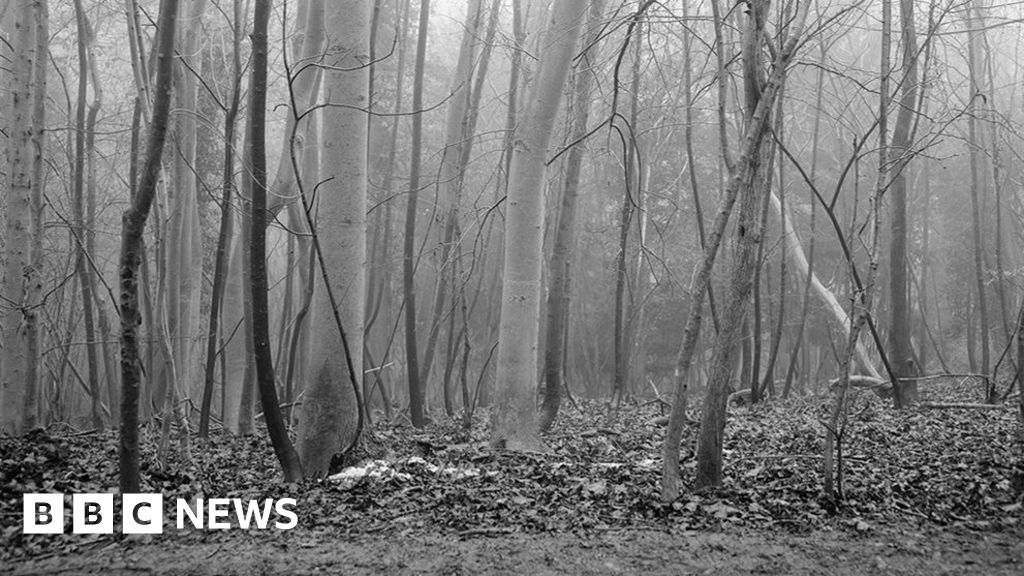 Jude Wall
Jude WallIn the year Sarah Everard was abducted, raped and murdered by a serving police officer, at least 146 other women in the UK were killed by men – but how many of their names could you recall?
Six months before Sarah’s death in 2021, another woman was murdered near where documentary photographer Jude Wall was living and she was struck by the disparity in media attention.
It was the catalyst for a photography project that has so far seen her visit 15 sites where murdered women have been buried in shallow graves.
“I’m interested in how much of them is still present,” Ms Wall said. “What traces they leave behind, what little magical things they leave behind that we’re unaware of, not noticing and not seeing.”
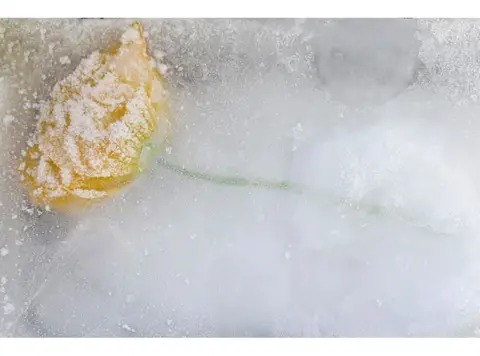 Jude Wall
Jude WallMs Wall, who lives in Swansea and lectures in photography at Cardiff Metropolitan University, said a woman is killed by a man on average every three days in the UK but most of their stories go unheard.
She described the photos she takes as “memorials”, aimed at opening up a conversation.
“It’s not angry data, it’s a ‘look, this is happening, there’s still a big problem here’,” she said.
Ms Wall locates the former burial sites using press images, local stories and flowers left on posts but said she had learnt to identify “very clear signs”.
Early on in the project she spoke to a forensic botanist about visible changes in plant life at burial sites and she uses this knowledge to “get a feel for where things were disturbed or otherwise slightly different”.
“I thought something must happen to the ground, the soil that they’re sitting in, so I started photographing the places, digging up soil and taking flowers that I thought were unusual… I didn’t really know what to do with them so I just started freezing them in my freezer,” she said.
Her work does not name the women or give details about their murders but includes grid references as well as photographs of the former burial sites and the frozen flowers.
She also uses soil chromatography, a photographic process that indicates the chemical, physical and biological characteristics of the earth.
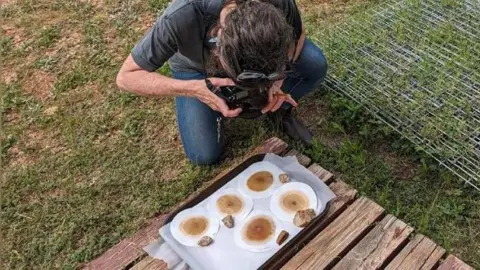 Jude Wall
Jude Wall “You can feel a presence, you can feel an atmosphere, you can feel something when you’re there,” she said.
Keen to find out more about changes to landscapes at burial sites, she recently visited the Forensic Anthropology Research Facility in Texas, a 26-acre outdoor human decomposition research lab at Texas State University’s Freeman Ranch.
Here bodies are donated and left in the landscape for research into solving murders.
She was given access to the experts based there as well as the meadow where the bodies are left, where she was allowed to take soil samples from underneath bodies.
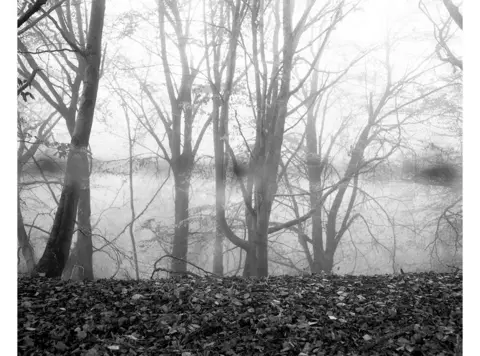 Jude Wall
Jude Wall“It confirmed a lot of what I already thought was happening, that these traces were being left behind, not in terms of body matter, but something changes in that space permanently and that person gets to live back through that,” she said.
Asked if she was frightened by the experience, she said she was focused on the idea that “the bigger picture is more important”.
She said the bodies were in various states of decomposition, with some slightly underground and others not.
“Occasionally the smell would hit but not very often. Obviously there’s things like maggots which we all don’t like to think of… but nothing ever felt horrifying or like a horror film.”
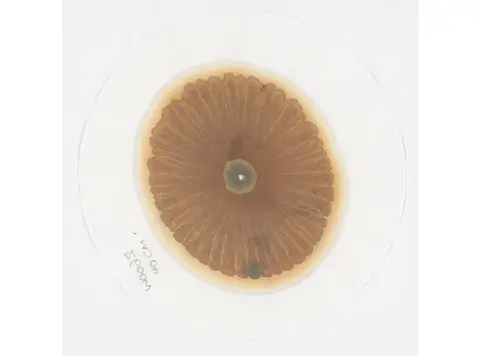 Jude Wall
Jude WallShe said the burial meadow felt still, quiet and calm.
“It’s not that you dehumanise them, but you start to notice the other things… there’s just these really visceral colours and tones that I guess you don’t expect to see,” she said.
“There’s butterflies everywhere, there’s just this life in the place.”
Now she has returned from Texas she plans to visit more UK burial sites, and eventually form a book and an exhibition.
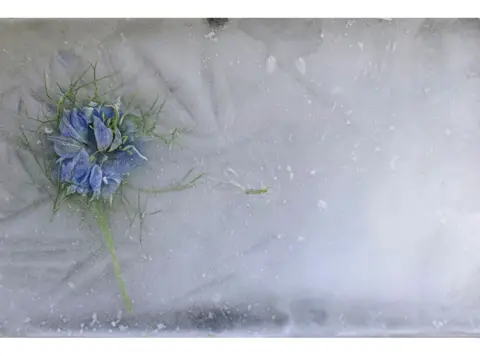 Jude Wall
Jude WallReaction to the project has been positive, she said.
“A lot of people say it’s really needed, which is lovely,” she said.
“I think my son said, ‘why do you have to be you?’” she laughed. “He’s 21, but he’s onside.”
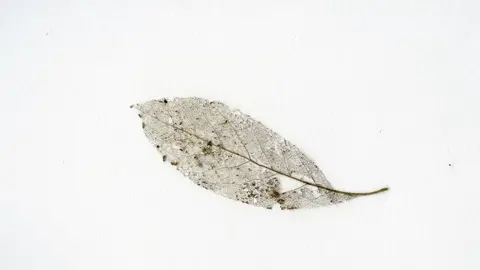 Jude Wall
Jude WallShe acknowledged that her often “desperately sad” project took an emotional toll on her “as it would anyone”, but said she was driven by wanting to “change the narrative” around femicide.
“People need to be more aware of how much it is happening. I’m really just trying to make people think about it,” she said.
She said her project was about remembering the lives of murdered women.
“It’s affirming their existence, their life, who they are.”
